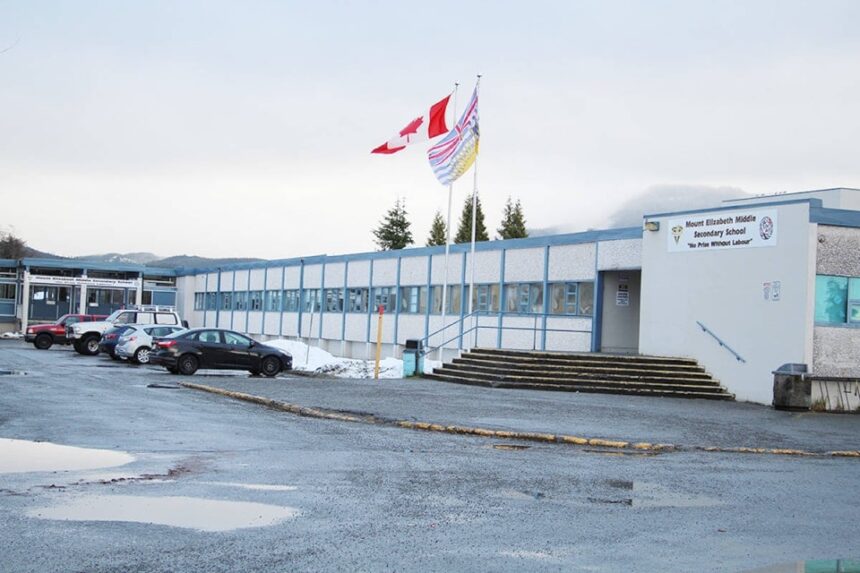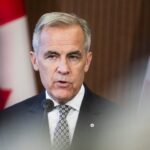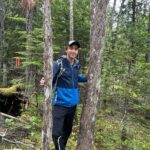The two-story home of the Haisla Nation Council office sits perched on a hill overlooking the Douglas Channel, where on a crisp autumn morning last week, a yellow school bus unloaded thirty excited teenagers onto the gravel parking lot. These Kitimat students weren’t here for the panoramic views of the coastal inlet that stretches toward the Pacific. They came to glimpse their possible futures.
Inside, the council chambers had been transformed into a healthcare career showcase. Nursing students from the University of Northern British Columbia demonstrated blood pressure readings while a respiratory therapist showed how to properly use an inhaler. In the corner, a physiotherapist guided a student through proper lifting techniques.
“I never realized there were so many different jobs in healthcare,” said Mia Johnston, a Grade 11 student at Mount Elizabeth Middle Secondary School, as she carefully placed a stethoscope against her friend’s chest. “I always thought it was just doctors and nurses.”
This scene represents a critical moment in addressing rural British Columbia’s persistent healthcare staffing challenges. The Healthcare Careers Roadshow, a collaborative initiative between Northern Health, Coast Mountains School District, and Indigenous communities, aims to introduce students to healthcare professions before they make post-secondary decisions.
For communities like Kitimat, population 8,236, attracting and retaining healthcare professionals has long been a struggle. According to data from the Rural Coordination Centre of BC, rural communities experience physician turnover rates nearly three times higher than urban centers. The roadshow is one response to this chronic challenge.
Dr. Caroline Harris, a family physician who has practiced in Kitimat for eight years, volunteered at the event. “When I was in medical school in Vancouver, northern communities weren’t even on my radar,” she told me during a brief break between student presentations. “Many of my classmates had never ventured north of Whistler. We’re trying to plant seeds early, showing these kids they can have meaningful careers here at home.”
Research supports this approach. A 2022 study published in the Canadian Medical Association Journal found that healthcare professionals who grew up in rural settings were significantly more likely to practice in similar communities after completing their training. For Harris, this means developing homegrown talent is crucial for sustainable healthcare.
The roadshow particularly emphasizes opportunities for Indigenous students. Haisla Nation health director Sylvia Campbell helped organize the event, ensuring it reflected Indigenous approaches to wellbeing alongside Western medical practices.
“Our communities need healthcare providers who understand our history and our holistic view of health,” Campbell explained. “When our young people become healthcare professionals, they bring that understanding naturally.”
At one station, Haisla elder Robert Grant demonstrated traditional plant medicines used for generations. Students listened intently as he explained how devil’s club root can help manage diabetes symptoms – knowledge now being studied by researchers at the University of British Columbia’s Faculty of Pharmaceutical Sciences.
The diversity of careers showcased went well beyond the familiar. Students rotated between stations featuring medical laboratory technologists, dietitians, mental health counselors, and healthcare administrators.
“We deliberately highlight roles that don’t require a decade of schooling,” explained Terri Chisholm, Northern Health’s regional recruitment coordinator. “Not everyone wants to be a surgeon, and we need people in every part of the healthcare ecosystem.”
For some students, the roadshow confirmed existing aspirations. Ethan Williams, a Grade 12 student, has wanted to become a nurse since his grandfather’s extended hospital stay three years ago.
“The nurses made such a difference for my grandfather and our whole family,” Williams said. “But today I learned about nurse practitioners too, which seems like an amazing option I hadn’t considered before.”
Others discovered entirely new possibilities. Sophia Chen, a Grade 10 student with a passion for technology, spent nearly twenty minutes at the medical imaging station, fascinated by the MRI and ultrasound equipment demonstrations.
“I love computers and programming, but I never thought about how that connects to healthcare,” Chen said. “The radiologist showed me how they’re using artificial intelligence to help analyze scans. That could be an amazing career.”
The roadshow also addressed practical barriers. Representatives from Coast Mountain College and UNBC provided information about bridging programs, distance learning options, and financial aid specifically designed for northern students.
This practical focus reflects lessons learned from past recruitment efforts. According to a 2021 report from the Rural Evidence Review project at UBC, many healthcare education initiatives failed to address the financial and geographic barriers facing rural students.
“We know many of our students can’t relocate to Vancouver for four years of education,” said Diane Babich, career counselor at Mount Elizabeth. “But now there are pathways where they can start locally and finish with just a year or two away. That makes these careers much more accessible.”
The event concluded with a panel of local healthcare professionals sharing their journeys. Particularly moving was the story of Jamie Wilson, a Haisla member who left Kitimat to become a licensed practical nurse and recently returned to work at Kitimat General Hospital.
“When I was your age, nobody told me this was possible,” Wilson told the students. “I took a winding path to get here. But now I care for my own community, sometimes in our language. There’s nothing more rewarding than that.”
As students boarded the bus to return to school, several clutched brochures and contact information. The immediate impact was evident in their animated conversations, but the true measure of success will come years from now – when some of these same teenagers return to Kitimat with healthcare credentials in hand.
For Mia Johnston, that future suddenly seems possible. “Before today, I wasn’t sure what I wanted to do after graduation,” she said, pausing at the bus door. “Now I’m thinking about becoming a respiratory therapist. My grandmother has COPD, and I could help people like her right here at home.”
In communities across northern BC, these small moments of inspiration may ultimately be the most effective prescription for the region’s healthcare challenges.






